I'm trying to get my user from the table :

I saved this values via a form (so the cayenne configuration seems to be good).
the UserInfoFactory class is :
public class UserInfoFactory extends _UserInfo implements Serializable {
private static final long serialVersionUID = 1L;
public static ObjectContext getContext() {
@SuppressWarnings("deprecation")
ServerRuntime runtime = new ServerRuntime("cayenne-myapplication.xml");
return runtime.newContext();
}
@SuppressWarnings("unchecked")
public static List<UserInfoFactory> getUsersInfo() {
SQLTemplate select = new SQLTemplate(UserInfoFactory.class,
"SELECT * FROM mam.userinfo");
return getContext().performQuery(select);
}
}
My _UserInfo class is :
package com.example.myapplication.model;
import org.apache.cayenne.CayenneDataObject;
/**
* Class _UserInfo was generated by Cayenne.
* It is probably a good idea to avoid changing this class manually,
* since it may be overwritten next time code is regenerated.
* If you need to make any customizations, please use subclass.
*/
public abstract class _UserInfo extends CayenneDataObject {
public static final String ADDRESS_PROPERTY = "address";
public static final String EMAIL_PROPERTY = "email";
public static final String FIRSTNAME_PROPERTY = "firstname";
public static final String LASTNAME_PROPERTY = "lastname";
public static final String PHONENUMBER_PROPERTY = "phonenumber";
public static final String USERPASSWORD_PROPERTY = "userpassword";
public static final String USERPRIVILEGES_PROPERTY = "userprivileges";
public static final String USERID_PK_COLUMN = "USERID";
public void setAddress(String address) {
writeProperty(ADDRESS_PROPERTY, address);
}
public String getAddress() {
return (String)readProperty(ADDRESS_PROPERTY);
}
public void setEmail(String email) {
writeProperty(EMAIL_PROPERTY, email);
}
public String getEmail() {
return (String)readProperty(EMAIL_PROPERTY);
}
public void setFirstname(String firstname) {
writeProperty(FIRSTNAME_PROPERTY, firstname);
}
public String getFirstname() {
return (String)readProperty(FIRSTNAME_PROPERTY);
}
public void setLastname(String lastname) {
writeProperty(LASTNAME_PROPERTY, lastname);
}
public String getLastname() {
return (String)readProperty(LASTNAME_PROPERTY);
}
public void setPhonenumber(Integer phonenumber) {
writeProperty(PHONENUMBER_PROPERTY, phonenumber);
}
public Integer getPhonenumber() {
return (Integer)readProperty(PHONENUMBER_PROPERTY);
}
public void setUserpassword(String userpassword) {
writeProperty(USERPASSWORD_PROPERTY, userpassword);
}
public String getUserpassword() {
return (String)readProperty(USERPASSWORD_PROPERTY);
}
public void setUserprivileges(Short userprivileges) {
writeProperty(USERPRIVILEGES_PROPERTY, userprivileges);
}
public Short getUserprivileges() {
return (Short)readProperty(USERPRIVILEGES_PROPERTY);
}
}
I'm calling the method like that :
List<UserInfoFactory> users = UserInfoFactory.getUsersInfo();
But the users list return null.
 That should not be null but one value (test user).
That should not be null but one value (test user).
What did I do wrong?
Thanks,